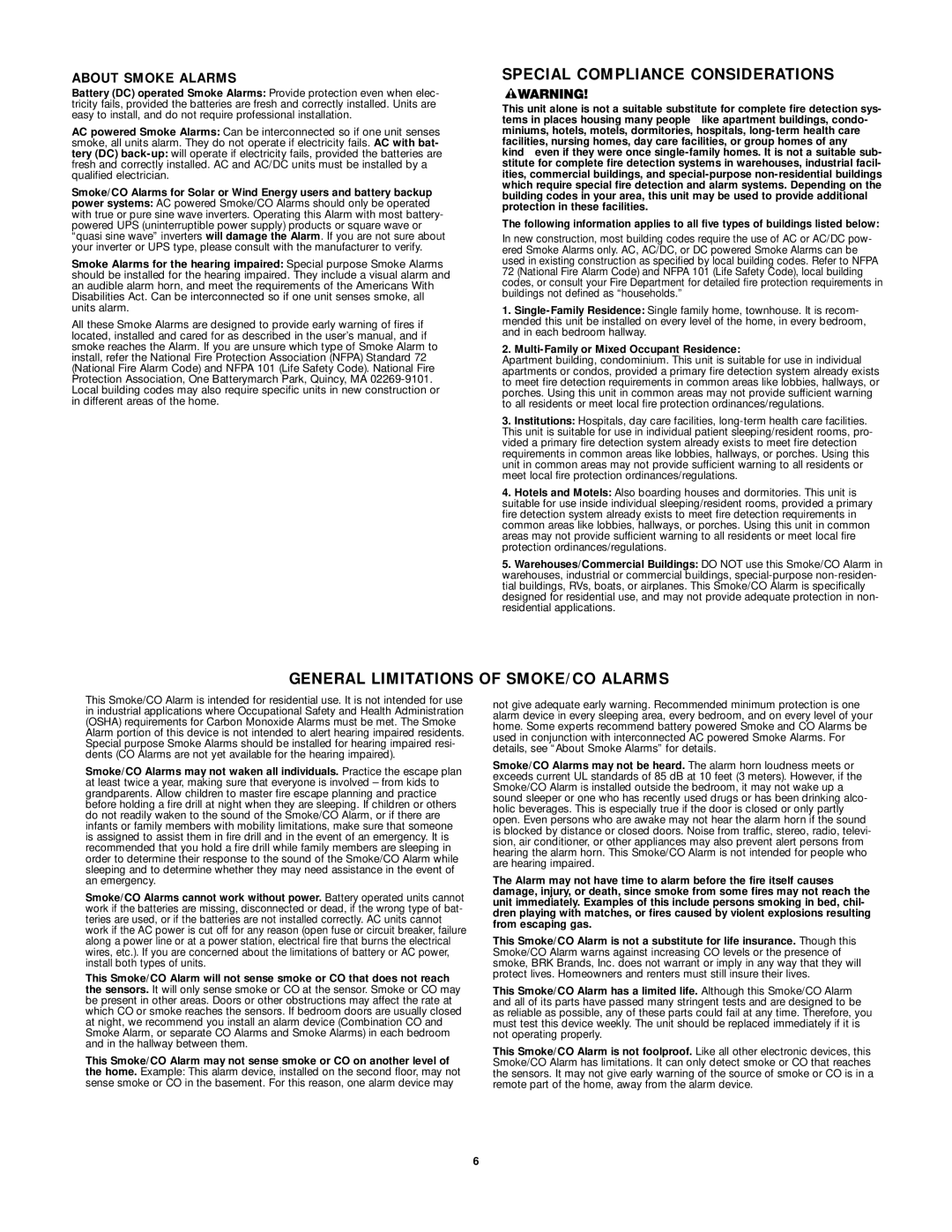Carbon Monoxide Alarm specifications
The First Alert Carbon Monoxide Alarm is a leading device designed to protect households from the dangerous effects of carbon monoxide (CO) exposure. CO is a colorless, odorless gas that can lead to severe health problems and even fatalities if undetected. The First Alert CO alarm utilizes advanced technology to provide reliable performance, ensuring the safety of you and your loved ones.One of the primary features of the First Alert Carbon Monoxide Alarm is its electrochemical sensing technology. This technology enhances the alarm's sensitivity to carbon monoxide, allowing for rapid detection of even low levels of CO. This sensitivity ensures that the alarm sounds promptly, giving occupants more time to react and evacuate or take necessary actions.
The alarm is equipped with a digital display that provides real-time updates on CO levels in the environment. This feature allows users to monitor the concentration of carbon monoxide in their homes, giving them insight into potential issues before the levels become dangerous. Moreover, the display often includes battery life indicators, ensuring users are always informed about the status of their device.
Another notable characteristic of the First Alert Carbon Monoxide Alarm is its compact and user-friendly design. The device can be easily installed in various locations throughout the home, such as bedrooms, hallways, or near fuel-burning appliances. With a simple setup process and clear user instructions, homeowners can ensure comprehensive coverage against CO exposure.
The alarm typically features a test/silence button, allowing users to periodically test the alarm’s functionality or silence it in non-emergency situations, such as when cooking. Additionally, many First Alert models come with a battery backup system, ensuring the alarm continues to function during power outages.
The First Alert Carbon Monoxide Alarm is also designed with the user experience in mind. It often includes a loud, penetrating alarm that meets or exceeds safety standards, ensuring that it captures attention even in the event of a potential emergency.
In conclusion, the First Alert Carbon Monoxide Alarm is a reliable, feature-rich device that enhances home safety against carbon monoxide. Its electrochemical sensing technology, real-time digital display, and user-friendly design make it an essential addition to any household, helping to protect families from the unseen dangers of this lethal gas.
